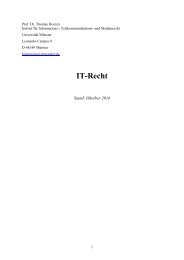3d4yVkKMl
3d4yVkKMl
3d4yVkKMl
Create successful ePaper yourself
Turn your PDF publications into a flip-book with our unique Google optimized e-Paper software.
- 42 -<br />
JARPA II is for purposes of scientific research and thus may be authorized by special permits<br />
granted under Article VIII, paragraph 1, of the Convention. To this end and in light of the<br />
applicable standard of review (see paragraph 67 above), the Court will examine whether the design<br />
and implementation of JARPA II are reasonable in relation to achieving the programme’s stated<br />
research objectives, taking into account the elements identified above (see paragraph 88).<br />
(a) Japan’s decisions regarding the use of lethal methods<br />
128. Lethal methods are central to the design of JARPA II. However, it should be noted that<br />
the Parties disagree as to the reasons for that.<br />
129. Japan states that it does not use lethal methods more than it considers necessary to meet<br />
research objectives and that lethal methods are “indispensable” in JARPA II because the<br />
programme’s first two objectives require data that can only realistically be obtained from internal<br />
organs and stomach contents. Japan accepts that non-lethal biopsies and satellite tagging have been<br />
used for certain larger species of whales but states that these methods are not practical for minke<br />
whales. Japan also points out that, while certain relevant data may be obtainable by non-lethal<br />
means, such data would be of lesser quality or reliability, and, in some cases, would involve<br />
“unrealistic” amounts of time and expense.<br />
130. By contrast, Australia maintains that Japan has an “unbending commitment to lethal<br />
take” and that “JARPA II is premised on the killing of whales”. According to Australia, JARPA II,<br />
like JARPA before it, is “merely a guise” under which to continue commercial whaling. One of the<br />
experts called by Australia, Mr. Mangel, stated that JARPA II “simply assert[s] but [does] not<br />
demonstrate that lethal take is required”. Australia further contends that a variety of non-lethal<br />
research methods, including satellite tagging, biopsy sampling and sighting surveys, are more<br />
effective ways to gather information for whale research and that the available technology has<br />
improved dramatically over the past quarter century since JARPA was first launched.<br />
131. As previously noted, Australia does not challenge the use of lethal research methods<br />
per se. Australia accepts that there may be situations in which research objectives can, in fact,<br />
require lethal methods, a view also taken by the two experts that it called. However, it maintains<br />
that lethal methods must be used in a research programme under Article VIII only when “no other<br />
means are available” and the use of lethal methods is thus “essential” to the stated objectives of a<br />
programme.<br />
132. In support of their respective contentions about the use of lethal methods in JARPA II,<br />
the Parties address three points: first, whether non-lethal methods are feasible as a means to obtain



